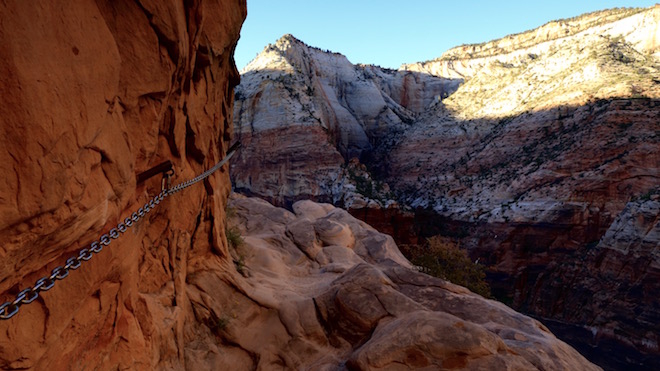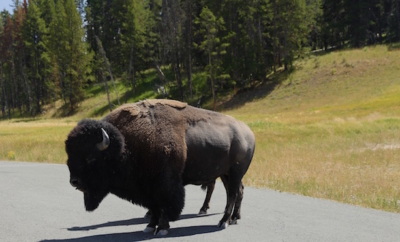
Behavioral Psychology
Fear Of Heights
If you have a debilitating fear of heights, if your fear has moved past the rational recognition of a real danger and into a phobia, then the very first thing to realize is that your aversion to heights has an evolutionary basis that in fact served your ancestors quite well. Anyone who was careless when encountering high places where a fall meant serious injury or death was more likely to fall off due to that very carelessness, which meant those ‘careless around heights’ genes had much less chance to propagate through the gene pool than the ‘vigilant around heights’ genes since you can’t procreate when you’re dead.
What’s our point? You’re not crazy for being terrified of heights. You’re evolutionarily programmed to feel this way and that fear, within limits, is a very effective negative reinforcer to keep you away from or very cautious around the high places that very well could result in serious injury or death.
But there’s rational fear and then there’s irrational fear. The first we tend to be able to live with pretty well, in fact we often feel grateful for it since it’s the result of our honest and intelligent appraisal of a situation and it helps us navigate a potentially dangerous environment. But the second is debilitating, it keeps us from full mental and emotional health and often stops us from doing many of the fun things we’d like to do, from sucking the nectar out of life.
If your fear of heights has become debilitating to the point where you miss out on all of those amazing experiences where heights are part of the equation then this fear is no longer serving you. We’re going to talk about a few existential and behavioral ideas that will hopefully help you begin to transform your irrational fear of heights into a healthy, reasonable fear of heights.
What’s really lurking behind the fear of heights, behind all phobias actually, is painful existential anxiety cued off by the constant specter of mortality. The existential insight to grasp is a painful one, which is simply that death is unavoidable. Of course we all know this rationally but our irrational Selves believe that somehow we’ll beat the odds, we’ll be the exception to the rule, we’ll live forever. But no matter what we do, no matter how well we take care of ourselves, sooner or later the outcome is the same for everyone.
And the fact is that objectively speaking there are myriad other ways to die that are statistically much more likely than falling from a steep precipice. It might sound paradoxical that this insight could help people find relief since it would seem to do just the opposite, to incapacitate them further by becoming more poignantly aware of the various threats to life hiding in plain sight all around them. But the point of placing falling from a steep place in the wider context of common ways to die is simply to minimize the dimensions of the threat. In the case of phobias the danger always take on larger than life dimensions. As we said the seed of the fear is reasonable and rational. If the plant is tended well there won’t be a problem but the phobia plant has grown wildly out of control.
Here’s the self-talk conversation to start to prune that phobia plant. “My fear of heights is reasonable in that if I am around a place with a steep drop-off I could fall off the edge and die. But the chances are really quite low, especially if I remain careful and vigilant. The chances of dying are much lower than many of the other common activities I do every day and take for granted, like driving my car to work. And I no longer wish to miss out on the adventures of life that have been barred to me due to my phobia of high places.”
Of course the debilitating, turn your knees to jelly kind of fear that all phobias produce really could exert a self-fulfilling prophecy where balance is compromised in a place where it’s very much needed, so you almost definitely want to stay away from the behavioral flooding technique of fully exposing yourself to the object of your phobia in order to pass through unscathed and therefore prove to yourself that your irrational fear is unfounded. It’s much better to start small and work your way up slowly but surely to full exposure. You can start with mental imagery, simply imagining a high place and imagining yourself navigating it. The more specific and vidid the imagery the better. Next physically put yourself at a height where the fall wouldn’t hurt you too bad but the distance from you to the ground still feels a little uncomfortable. Work your way up from there, always waiting until discomfort turns to familiarity and ease before moving up to the next level of intensity. The end goal should not be to make your fear of heights disappear completely but to bring it to reasonable levels where despite the risk you feel capable of navigating places with steep drop-offs.




